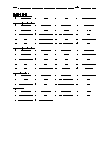Domain Functions Worksheets
What is the Domain of a Function? The domain of a function is defined as the number of values that can go into other sets of numbers. In simpler terms, the domain includes the x-values that can easily go into any given equation. The y-values that we have are known as the range. The domain is the input values put in an equation for which a function produces output values. The set of input values are typically termed as the x-values, and the obtained output values are known as the y-values. For finding out the domain, we need to know the type of function. If we have a polynomial function without radicals or variable sin denominators, then the domain is real numbers for this function. If we have a function with a fraction having a variable in the denominator, then we set the denominator equal to zero, and we exclude the x values. If we have a function with a variable in the radical sign, then we set the terms of the radical sign greater to zero and solve to calculate the values for x. If we have a function with a natural log, then we set the terms within the parentheses greater to zero and solve for x.
-
Lesson
Guides students through Domain Functions. one-to-one : A function f from A to B is called one-to-one (or 1-1) if whenever f (a) = f (b) then a = b. No element of B is the image of more than one element in A.
View worksheet -
Independent Practice 1
A really great activity for allowing students to understand the concept of Domain Functions. Such as Onto: A function f from A to B is called onto if for all b in B there is an a in A such that f (a) = b. All elements in B are used.
View worksheet -
Independent Practice 2
Students find the domain of functions in assorted problems. The answers can be found below. The range is the set of all second elements of ordered pairs (y-coordinates).
View worksheet -
Homework Worksheet
Students are provided with problems to achieve the concepts we explored with this topic.
View worksheet
The Words of Tolstoy...
"A man is like a fraction whose numerator is what he is and whose denominator is what he thinks of himself. The larger the denominator, the smaller the fraction."





